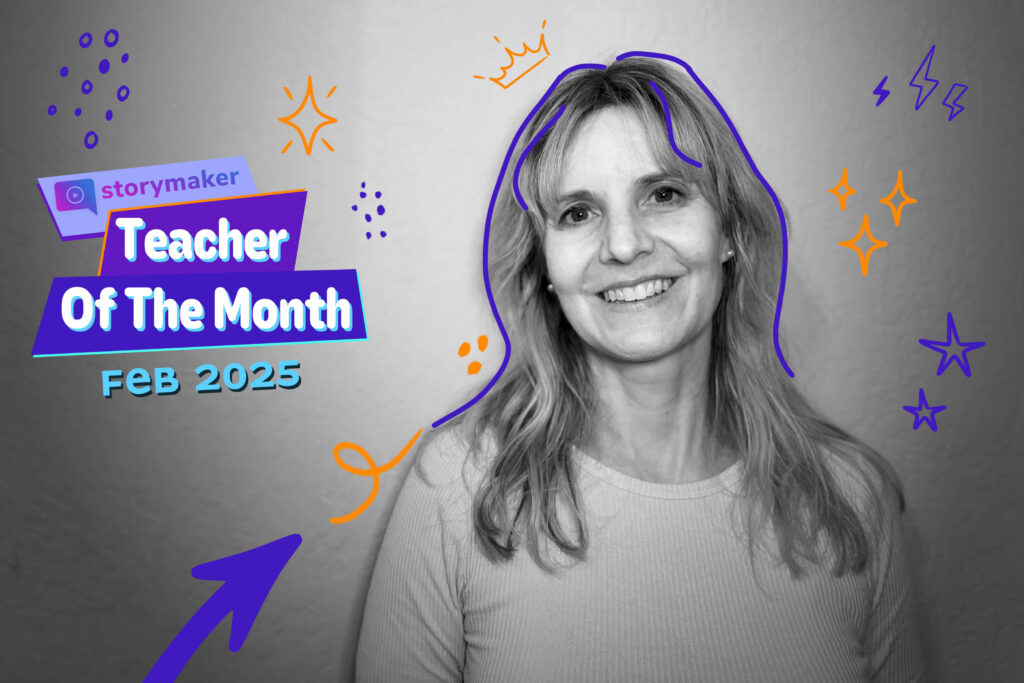Teacher Feature February 2025: Jodi Hwang

Jodi Hwang teaches in the Digital Communications Career Technical Education pathway (Journalism One/Yearbook) at Los Altos High School in the San Francisco Bay Area. She is also a KQED Media Literacy Innovator and enjoys seeing her students share their work with a wider audience beyond the classroom. Prior to her teaching career, she was the editor-in-chief of Urban Family, an expat family magazine in Shanghai, China, as well as a web show producer and reference coordinator at a cable news channel in New York City. Jodi holds an M.A. in Media Ecology from New York University and B.A. in Communication from DePauw University, where she was also a Media Fellow.
Discover Jodie’s favorite tools, pro tips, and the impactful ways she’s used podcasting to amplify student voices and create deeper learning opportunities in the Q&A below.
How long have you been using StoryMaker or SRL resources in your classroom? Just started this school year!
What’s your favorite StoryMaker lesson(s)? Exploring Immigrant Experiences is one that resonates with my students and their families. I’ve used a similar concept for podcasts in English classes and students were engaged and learned more about their peers in the process.
What’s a media-making tool or resource you can’t live without? I’m a camera buff and my retro-style Nikon Zf has made me a better photographer and teacher.
How have you integrated podcasting into your English curriculum, and what impact has it had on your students’ learning?
Podcasting became a valuable tool in my teaching, beginning during the pandemic. Initially, I used it to empower students in my tenth-grade English classes to share their online learning experiences, countering the “learning loss” narrative, which was dominant in the media at the time (End-of-Year Reflection Podcast 1 and Podcast 2). Seeing how engaged they were sharing their stories, I later incorporated podcasts into speech units, allowing students to express core values and identity aspects, adding music and soundscapes to reflect the tone of their podcasts (student 1, student 2, and student 2). Thematic podcasts, like those connecting to The Kite Runner novel we read, through interviews about 9/11 memories (examples in Russian and in English), and immigrant stories with family or adults in their lives, fostered deeper understanding and connection to loved ones and more self-awareness. Students often reflected that they had never had the opportunity to ask their family members these questions, which opened up lines of communication at home and provided a more meaningful project than a traditional written essay.
Now teaching Digital Communications, I use podcasting for students to explore Pulitzer-winning journalism and share how the winning stories were reported, which exposes students to in-depth reporting and the power of journalism. My Yearbook class also launched “Aerie on Air,” a student-run podcast featuring interviews with staff and students about school life, as a way to hear the year. We purchased a RODECaster Pro setup with four microphones and after a recent move to a new classroom, we created a studio complete with a neon sign and fake brick wall. We’ve kept production simple adding music and sounds during the recording and kept the interviews short for their teen audience.
Your students are set to be the season hosts of On Our Minds Season 5—congratulations! What steps did you take to prepare them for this opportunity?
I wish I could take credit for preparing the student hosts, but I only shared the On Our Minds hosting opportunity with my classes and encouraged them to apply. Only one of the hosts is a student in my Digital Communications II/Yearbook class, who convinced a friend to apply together. They are both incredibly bright and talented, and they are also good conversationalists, so it’s no surprise they were selected. I’d like to think that by providing the equipment for professional-style podcasting, more of my students are now interested in podcasting. My philosophy is if you build it, they will come.
What’s a dream story you’d like to report on or a person you’d like to interview? My dream interview would be with Joan Benoit Samuelson. Last year was the 40th anniversary of Samuelson’s Los Angeles Olympic Marathon win. 1984 was the first year for the women’s marathon in the Olympics and as a young girl I watched with awe as she blazed through the LA heat to make history. Next to my desk, I have a picture of Samuelson with her arms up crossing the finish line because she continues to inspire me.
What’s your advice for teachers and educators just getting started on StoryMaker? Creating media can be messy, but that’s how learning happens. Don’t be afraid of the chaos.
What are you currently listening to? The Radiolab episode, Curiosity Killed the Adage.
Fun facts about you? In the early 1990s, I hosted a live election special for my small-town high school TV station that aired on cable access to our town of 3,500 people. Of course, since it was the ’90s I wore a blazer with big shoulder pads!
You can reach out to Jodi directly to learn more about how she’s adapted StoryMaker into her classes. Email her at jodi.hwang@mvla.net or connect with her on LinkedIn here.






